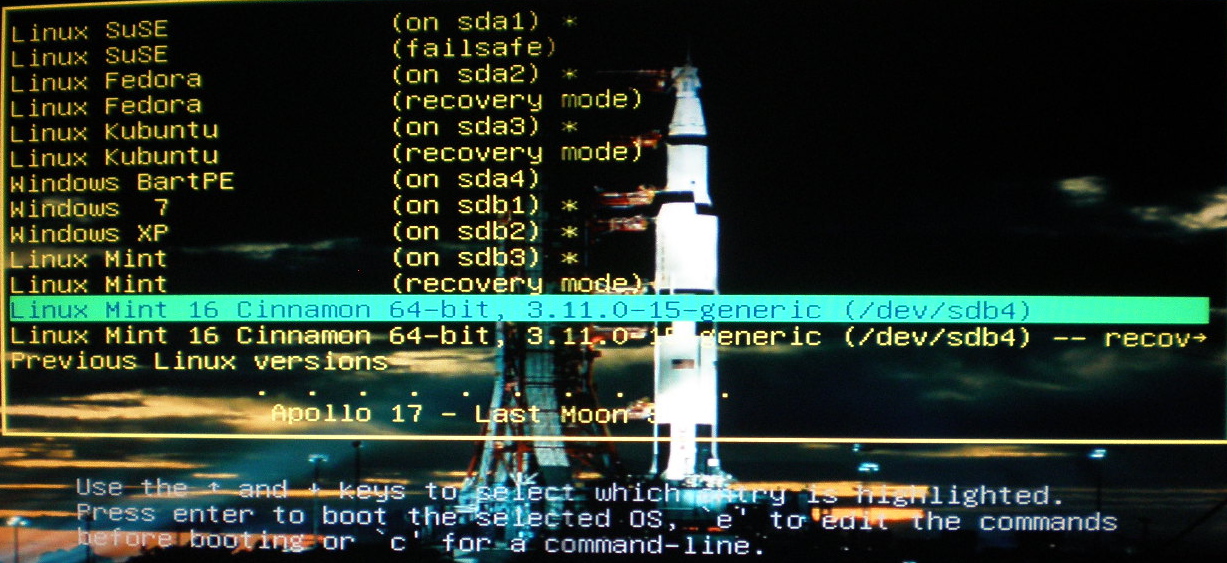| YouTube Videos |
| FILTERS: |
| ALL |
| Backup Cloning |
| Android |
| Android-x86 |
| Chromecast |
| Dual Boot MultiBoot |
| Linux |
| Messaging IM SMS |
| Misc. Soc Media |
| Music Jazz MPB |
| Remote Controls |
| Screen Recording |
| Smart-TV IPTV |
| USB Flash Drives |
| Windows |
 |
Krister's Blog krister at hallergard dot com | Last Updated: 2014-01-24 |
Sometimes I use PartImage to move my Linux partitions, which have exactly the same size. You can restore to a bigger target partition, but not to a smaller. I use this method when getting a new hard drive. With Partimage you can not use ext4 and btrfs filesystems. I use ext3 for all Linux partitions.
 View Video 5 min
View Video 5 min
Restoring to a different target partitions than the source is rather much the same as to its own source
as described here, except of course specifying another target
partition.
|
 Restoring from images of sdb3 residing at sdb1 (w5) to sdb4 |
Now comes the tricky part: How to make the partition bootable in its new location?
We now have two identical Linux Mint partitions (unless we have already used sdb3 for something else), which is not acceptable.
The bootsector of the restored partition now has the same UUID (universally unique identifier) as the source.
Will change it back to its previous UUID (which you have made a note of above):
|
Start a file manager and navigate to /mnt/l8/etc/fstab. Open fstab in a text editor and change the first line to the same UUID as before, defining the root location. Also move the hash (#) from /dev/sdb3 to /dev/sdb4. /mnt/sdb4/etc/fstab (textfile) |
|
If you like most people are happy with having only one boot menu on the very first partition, you can stop reading here!
My desktop PC uses BIOS-MBR. I want to be able to boot sdb4 independently using its own boatloader menu. Then there are some more steps as we cannot boot from the restored sdb4 yet. Its grub2 boot menu has not been updated, and this update has to be done after booting sdb4! Catch 22! There is a workaround: Booting sdb4 using another partition's boot menu. |
|
 Bootmenu Linux Ubuntu on sda2 Key down to boot sdb4! - Click to see! Linux Mint is now on sdb4, not Linux Fedora! |
Here is Linux Ubuntu's boot menu. The last item states Linux Fedora, which was previously on sdb4 and had the UUID that
we now have restored to Linux Mint on sdb4. Move to the last item and press enter to boot Linux Mint!
After successfully booting Linux Mint in its new location sdb4, we can update the partition boot sector and then the Grub2 bootmenu:
|
 Linux Mint boot menu on sdb4! after some cosmetic edits |
|